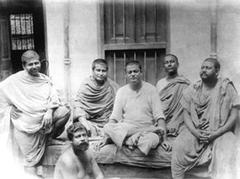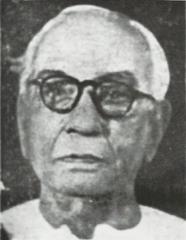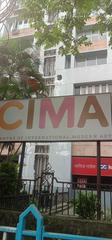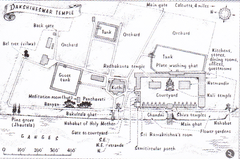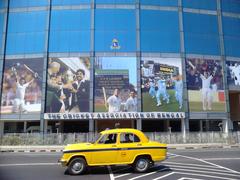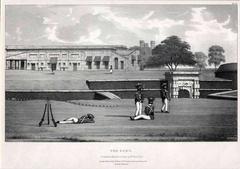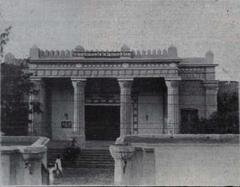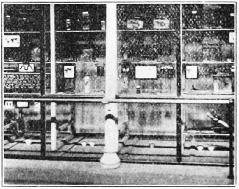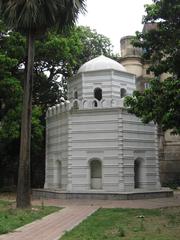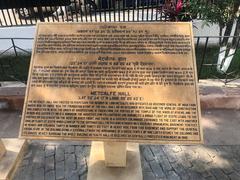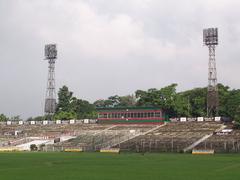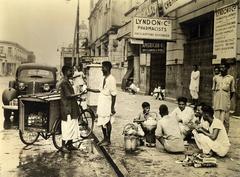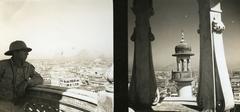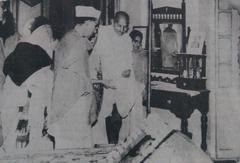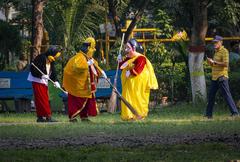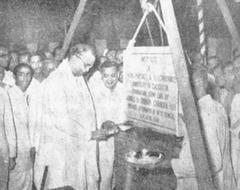Academy of Fine Arts Kolkata: Visiting Hours, Tickets, and Historical Significance
Date: 03/07/2025
Introduction
The Academy of Fine Arts Kolkata stands as a distinguished cultural landmark, deeply woven into the city’s artistic and historical tapestry. Founded in 1933 by Lady Ranu Mukherjee, this institution has been pivotal in nurturing Bengal’s creative renaissance, preserving India’s artistic traditions, and serving as a dynamic hub for contemporary expression. Its central location, storied legacy, and vibrant programming make it an essential destination for art enthusiasts, theatre lovers, and travelers exploring Kolkata’s historical sites (Academy of Fine Arts Official).
Table of Contents
- Introduction
- Founding and Early Years
- Architectural Evolution
- Role in Bengal’s Cultural Renaissance
- Notable Events and Exhibitions
- Collections and Museum Holdings
- Educational Initiatives and Community Engagement
- Association with Notable Personalities
- Visiting Hours and Tickets
- Accessibility and Travel Tips
- Gallery and Theatre Highlights
- Nearby Attractions
- Visitor Tips and Facilities
- Frequently Asked Questions (FAQs)
- Conclusion: Legacy and Cultural Significance
- References
Founding and Early Years
Established in 1933 by Lady Ranu Mukherjee, the Academy of Fine Arts Kolkata was born out of a vision to create a dedicated space for the promotion of fine arts in Bengal. The institution’s formal inauguration by Rabindranath Tagore set a tone of artistic excellence and cultural leadership from the outset. In its earliest years, the Academy operated from a modest building, providing exhibition space for local artists and a platform for art education (Academy of Fine Arts Official).
Architectural Evolution
By the early 1950s, the Academy moved to its current home at 2 Cathedral Road, near St. Paul’s Cathedral. The modernist complex, inaugurated in 1952, houses multiple galleries, an auditorium, and museum spaces. Over time, expansions have added eight galleries, a 350-seat auditorium, and a dedicated museum, making it one of eastern India’s largest art complexes (Kolkata Tourism).
Role in Bengal’s Cultural Renaissance
The Academy emerged as a cultural nucleus during the Bengal Renaissance, a period marked by intellectual and artistic flourishing. It provided a crucial platform for visionaries like Jamini Roy, Nandalal Bose, and Abanindranath Tagore, supporting the evolution of modern Indian art and fostering interdisciplinary gatherings with writers, dramatists, and musicians (The Telegraph India).
Notable Events and Exhibitions
The annual All India Fine Arts Exhibition, initiated in the 1940s, remains a highlight, drawing artists from across India. The auditorium has hosted iconic theatre productions, dance performances, and literary events. The Bengali theatre movement, in particular, found its creative home here, with luminaries like Utpal Dutt and Badal Sircar presenting landmark works (Outlook India).
Collections and Museum Holdings
The Academy’s museum houses over 1,000 works, including paintings, sculptures, textiles, and rare manuscripts, with highlights from Rabindranath Tagore, Jamini Roy, and Gaganendranath Tagore. Its inclusive approach encompasses folk and tribal art, preserving a spectrum of India’s artistic heritage (Academy of Fine Arts Museum).
Educational Initiatives and Community Engagement
Education is integral to the Academy’s mission. Regular workshops, lectures, and seminars nurture talent and promote art appreciation. Outreach programs include art camps for children, special exhibitions for marginalized communities, and collaborations with schools and cultural organizations, democratizing access to art across Kolkata (Times of India).
Association with Notable Personalities
The Academy’s history is intertwined with renowned figures:
- Rabindranath Tagore: Inaugurated the institution and contributed to its artistic vision.
- Jamini Roy, Nandalal Bose, Abanindranath Tagore: Pioneers of modern Indian art whose works are central to the collection.
- Utpal Dutt: Legendary theatre director and actor whose productions graced the Academy’s stage.
- Lady Ranu Mukherjee: Visionary founder and lifelong patron.
Visiting Hours and Tickets
- Regular Hours: Typically open from 10:00 AM to 6:00 PM, Tuesday to Sunday. Closed on Mondays and major public holidays.
- Entry Fees: Permanent galleries and museum sections are generally free; special exhibitions or performances may require a nominal fee. It is best to check the official website for up-to-date details (TripHobo).
- Theatre Tickets: Available at the on-site box office; prices vary by event.
Accessibility and Travel Tips
- Location: 2 Cathedral Road, adjacent to Maidan, near St. Paul’s Cathedral and Victoria Memorial (Lonely Planet).
- Transport: Easily accessible by metro (Maidan and Rabindra Sadan stations), city buses, taxis, and app-based cabs.
- Accessibility: The galleries and auditorium are wheelchair accessible; staff assistance is available as needed.
Gallery and Theatre Highlights
- Eight Galleries: Showcasing permanent and rotating exhibitions featuring both classical and contemporary Indian artists (LBB).
- Textile Museum: Displays rare textiles and carpets, highlighting Bengal’s rich handloom heritage.
- Theatre Auditorium: Hosts Bengali and multilingual plays, dance, and music performances—especially vibrant during annual festivals (Homegrown).
- Rabindra Gallery: Dedicated to Rabindranath Tagore’s artistic legacy.
Nearby Attractions
- Victoria Memorial: Majestic marble monument and museum.
- St. Paul’s Cathedral: Neo-Gothic architectural landmark.
- Birla Planetarium and Indian Museum: Enrich your cultural itinerary with visits to these nearby sites (Tourist Places).
Visitor Tips and Facilities
- Photography: Generally allowed without flash; restrictions may apply for special exhibits.
- Café and Bookshop: Enjoy light refreshments and browse art books and souvenirs.
- Restrooms and Seating: Located throughout the premises.
- Event Participation: Arrive early for popular shows and workshops; check schedules online or on-site notice boards.
- Language: Information is provided in English and Bengali.
Frequently Asked Questions (FAQs)
Q: What are the Academy of Fine Arts Kolkata visiting hours?
A: Typically 10:00 AM to 6:00 PM, Tuesday to Sunday; closed Mondays and public holidays.
Q: Is there an entry fee?
A: Entry to the main galleries is usually free; special exhibitions or performances may require a ticket.
Q: How do I buy tickets for theatre events?
A: Tickets are sold at the on-site box office; online ticketing is limited.
Q: Is the Academy accessible for visitors with disabilities?
A: Yes, the main areas are wheelchair accessible and staff are available to assist.
Q: Are guided tours available?
A: Guided tours are occasionally offered during major exhibitions; inquire at the front desk or official website.
Q: Can I take photographs inside?
A: Photography is generally permitted in public areas without flash; always check for specific restrictions.
Conclusion: Legacy and Cultural Significance
The Academy of Fine Arts Kolkata is more than a museum or theatre—it is a vibrant testament to the city’s ongoing commitment to artistic innovation and cultural preservation. Its galleries, festivals, and educational programs continue to inspire generations, while its accessibility and dynamic programming ensure that it remains a welcoming space for all. By visiting, you connect with a living tradition that reflects the artistic soul of Kolkata and India at large (Kolkata Tourism).
For the latest information on hours, exhibitions, and events, consult the official website. Enhance your visit by exploring nearby landmarks and downloading the Audiala app for curated cultural experiences.
References
- Academy of Fine Arts Official
- Kolkata Tourism
- The Telegraph India
- Times of India
- Outlook India
- The Kolkata Buzz
- Lonely Planet
- TripHobo
- LBB
- Homegrown
- Tourly
- Art Soul Life Magazine
- Tourist Places
- Indianetzone
- Academy of Fine Arts Museum
- Culture & Heritage
